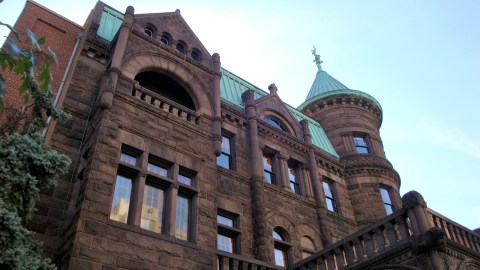Last Thursday I blogged about a potential “dark future” in which the nonprofit field fragments, as society and policy makers come to view “social service” and “cultural” nonprofits as fundamentally different beasts. (Doug Borwick continued the discussion on his blog, Engaging Matters. I encourage you to wade in there, or in the comment section below.)
Today I found this story in my Twitter feed, courtesy of Nonprofit Quarterly:
Large Hospitals and Universities in NH Targeted by Proposed Tax Change
Apparently Representative David Hess (R) has introduced a bill into the state legislature that would eliminate the business tax exemption for nonprofits with more than $2 million in income, as reported in their IRS 990 statements. The income from this additional revenue would be used to lower the overall tax rate for state residents.
The press coverage specifically mentions hospitals and colleges. But by my calculation, some museums would be covered as well– the Currier Museum of Art and Strawbery Banke, at least.
Maybe this proposal won’t go anywhere (though being from that state, on my mother’s side, I am not entirely sanguine about that). But even if the bill dies, the way it frames the debate is a signal of change. The NPQ article cites supporters of the initiative as feeling that large nonprofits don’t pay for their fair share of public services. Small nonprofits are, by contrast, characterized as “ma and pa,” “community based” enterprises.
So we have yet another way to divvy up the nonprofit sector into worthy and unworthy (of tax exemption). Hess’ schema is particularly disturbing because it implicitly equates “small” with “poor and deserving” and “large” with “profitable and greedy.” Even if he is going after big nonprofits because, after all, that’s where the money is, the effect is to stigmatize them as being somehow more like commercial enterprises than their smaller kin. Even if (as Dan Pallotta points out) making and spending large amounts of money results in more and better good for the community.
My head hurts.
Another Way to Split Nonprofits
Category:
Center for the Future of Museums Blog
Posted on








